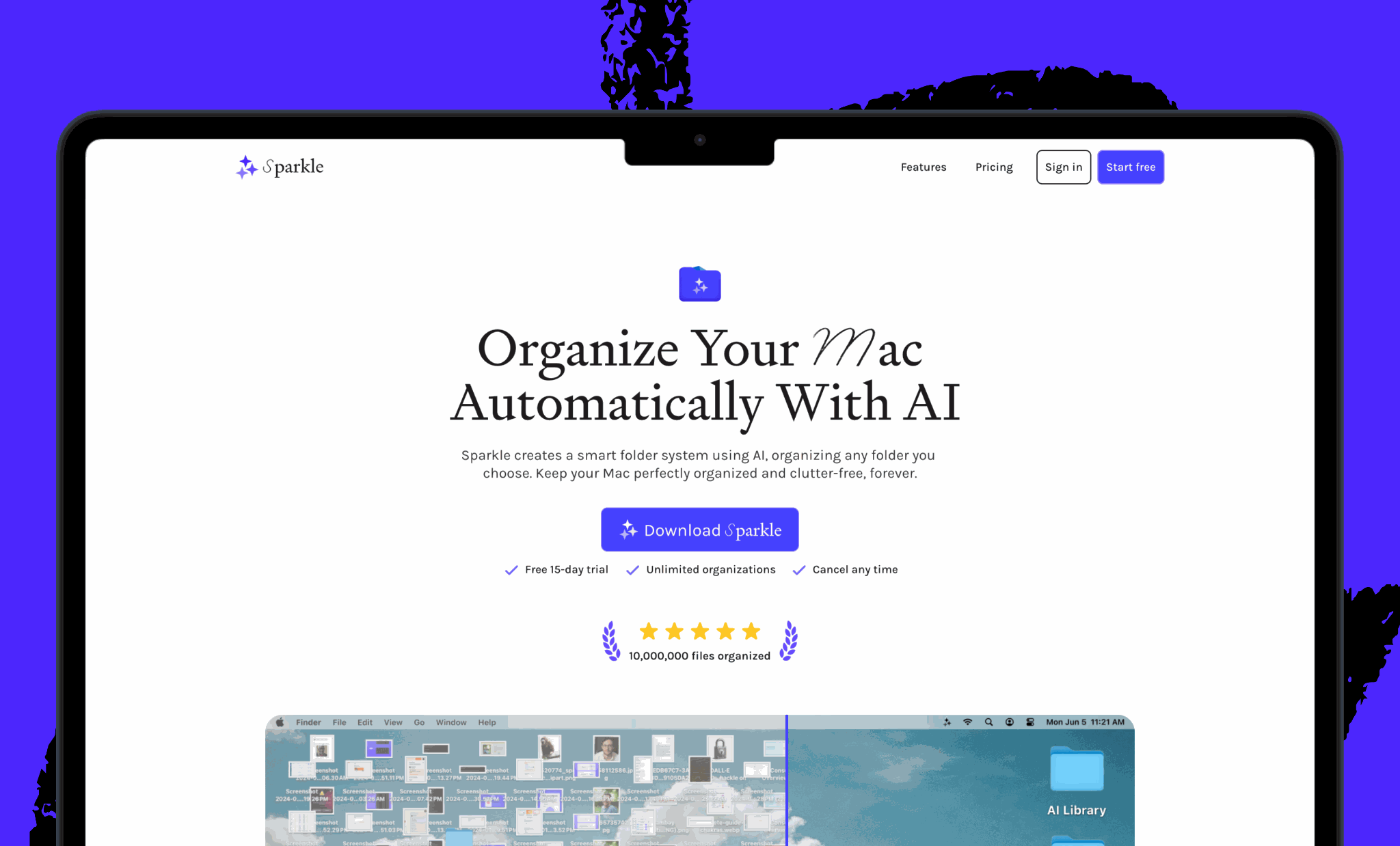TL;DR: Today we’re releasing a new episode of our podcast AI & I. Dan Shipper sits down with Jason Fried, the cofounder and CEO of 37signals. Watch on X or YouTube, or listen on Spotify or Apple Podcasts. Here’s a link to the episode transcript.
Was this newsletter forwarded to you? Sign up to get it in your inbox.
Running a business is not that interesting to Jason Fried—even though his bootstrapped company earns tens of millions in profit every year, and he’s been at it for over two decades.
What lights him up—and has him waxing lyrical about architecture, watches, and cars—is making products, particularly the kind that are built around a single, coherent idea. The kind that leaves people with a near-spiritual sense of satisfaction.
Fried is the cofounder and CEO of 37signals, the makers of product management tool Basecamp and web application framework Ruby on Rails, and you can see his obsession with product reflected back by his loyal users. In this episode of AI & I, Dan Shipper and Fried talk about everything he’s learned about building something whole, from the way he designs software to his philosophy around running a company.
Here is a link to the episode transcript.
You can check out their full conversation here:
Here are some of the themes they touch on:
How Fried thinks about building new products
Fried treats making software—and the experience of using it—as something that should inspire a feeling of completeness. Here’s more nuance from him on this philosophy:
We can’t touch software, but it can move us
For the first 10 minutes of the episode, Fried is ostensibly talking about watches, cars, and architecture. But put your ear to the ground, and you’ll hear echoes of what he thinks about software.
- Watches are “a few hands pointing at a few numbers and some that can do a few other things,” yet they come in thousands of variations.
- With cars, Fried is fixated on how thoughtful the design feels; in other words, whether you can reach every button and gear without stretching too far. The best designs signal that someone “sat in the seat and thought about what it’d be like to drive this.”
- Being in a great building, for him, is a “spiritual experience”: “Just the way the proportions are and the light comes in, and the colors and the textures and the way materials meet… I just love the feeling that it gives me.”
Beautiful things make Fried feel a certain way, and he aims to bring that same “deep satisfaction” to software. He knows pixels aren’t the same as physical objects but doesn’t shy away from using the feeling as a north star anyway: “There’s not really an equivalency here, but there’s a sense of, ‘Yeah, that feels right,’ and that’s what we try to do with the products.”
The case for using AI to maximize meaning, not efficiency
The engineers at 37signals don’t typically use AI to write code. Fried describes them as the kind of programmers who take pleasure in the act itself: “If you’re a poet, you want to write poetry,” he says. They use AI only around the edges for tedious tasks—like looking up API calls—that don’t touch the core of their craft. “If you have the skills that you like to use and you don’t use them, just like anything else, you begin to lose [them], so if you like those skills, it’s a delicate, tricky thing to balance.” Their restraint is telling: When they use AI to build products they’re doing it as a way to find meaning, rather than grasping blindly for efficiency.
How Fried thinks about building a meaningful business
Fried believes the best companies are also built on a cohesive idea—and in the case of your business that means, specifically, your idea.
The best companies—and houses—hold together because they’re built from one idea
After over two decades of running 37signals, Fried’s biggest revelation is about wholeness. A business, he says, isn’t a stack of layers “laminated” together. In the case of Every’s business, Dan’s love for writing, the way he thinks, and how he manages the team, all form part of the company’s fabric: If Dan outsourced all the writing to make room for more “CEO work,” Every simply wouldn’t be the same business anymore. “I don’t think you can be like, I’m going to take this layer out and give it to someone else to do [because] it’s no longer the same material anymore,” Fried says.
He reaches for architecture to make the point. A house designed by the legendary architect Frank Lloyd Wright is his “idea manifested in wood and glass and concrete and stone… a full, complete idea” where everything down to the type of sink is part of a single vision. Swap the sink for a shiny Home Depot model—or even a high-brow Italian one—and “it’s not a Frank Lloyd Wright house anymore.” Businesses, Fried says, are like that too, there’s a kind of spiritual integrity that keeps the whole together.
But those complete ideas are rare. “We’ve become less willing, I think, to invest in whole, in complete ideas as a society,” he says. Modern things—buildings, products, software—can look good but feel hollow. Returning to architecture, Fried points out that unless a client gives the architect full creative freedom, there will always be “trade-offs” or compromises in the vision. Software, he adds, comes with even more. “You have to deal with all sorts of conditions that aren’t fixed,” he says, like different screen sizes. Still, he believes there’s value in trying.
Everyone looks the same, except people who don’t try to
Fried calls this moment “the age of undifferent” because everything, he says, is starting to look the same: “Software interfaces all look like wireframes… thin gray lines and gray text with everything.” This templated sameness has crept into business, he argues. And it’s created an opening. “If you run a company that is not the same, I think you’re in a really, really good position—and the only way not to be the same is just to be you… wrap yourself around yourself and don’t let go.”
That’s easy to say when things are clear, and much harder when you’re standing at the edge of a new phase of your business—when you don’t yet know what comes next. Fried’s advice in those moments is to let go of the need for certainty. “Just admit that it’s perfectly okay to make it up as you go,” he says, “you just stay with it day by day and you figure it out as you go.”
What do you use AI for? Have you found any interesting or surprising use cases? We want to hear from you—and we might even interview you.
Here’s a link to the episode transcript.
Timestamps
- Introduction: 00:00:32
- What architecture, watches, and cars teach us about software: 00:02:06
- How Jason thinks AI plays into product-building: 00:10:54
- How developers at 37signals use AI: 00:20:58
- Jason’s biggest realization after 26 years of running 37signals: 00:25:47
- Where Jason thinks luck shaped his career: 00:29:58
- What Jason would do if he were graduated into the AI boom: 00:32:41
- Dan asks for advice on running a non-traditional company like Every: 00:37:22
- Why staying true to yourself is the only way to build something lasting: 00:46:39
- Wholeness as the north star for building products—and companies: 00:49:38
You can check out the episode on X, Spotify, Apple Podcasts, or YouTube. Links are below:
- Watch on X
- Watch on YouTube
- Listen on Spotify (make sure to follow to help us rank!)
- Listen on Apple Podcasts
Miss an episode? Catch up on Dan’s recent conversations with founding executive editor of Wired Kevin Kelly, star podcaster Dwarkesh Patel, LinkedIn cofounder Reid Hoffman, ChatPRD founder Claire Vo, economist Tyler Cowen, writer and entrepreneur David Perell, founder and newsletter operator Ben Tossell, and others, and learn how they use AI to think, create, and relate.
If you’re enjoying the podcast, here are a few things I recommend:
- Subscribe to Every
- Follow Dan on X
- Subscribe to Every’s YouTube channel
Rhea Purohit is a contributing writer for Every focused on research-driven storytelling in tech. You can follow her on X at @RheaPurohit1 and on LinkedIn, and Every on X at @every and on LinkedIn.
We build AI tools for readers like you. Write brilliantly with Spiral. Organize files automatically with Sparkle. Deliver yourself from email with Cora. Dictate effortlessly with Monologue.
We also do AI training, adoption, and innovation for companies. Work with us to bring AI into your organization.
Get paid for sharing Every with your friends. Join our referral program.
For sponsorship opportunities, reach out to sponsorships@every.to.








